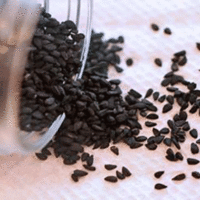In the small southeast nation of Myanmar, a new technological project is making big environmental waves. With the hope of restoring the country’s coastal mangrove forests, tree-planting drones have taken to the air. The success and immense potential of the young project are already apparent within engineering and environmental groups. (1)
Dendra Systems
Behind the drones is Dendra Systems. Previously called Biocarbon Engineering, Dendra Systems provides analytics and planting solutions for large-scale ecosystem restoration. A huge part of their automated work involves ariel scanning and planting that comes from the drones. Yet, the company also offers soil erosion analysis, weed monitoring, and strategic intervention planning in diverse biological landscapes. Additionally, all of their work is geotagged for future reference and monitoring.
Their services are ideal for oil, gas, and open-cut mine rehabilitation, but Dendra Systems promises they can, and have, worked in many diverse settings. Currently, Dendra is located in the United Kingdom but has worked throughout Australia and Myanmar. Perhaps they will come to North America soon! (2)
Benefits Of Tree-Planting Drones
The benefits of tree-planting drones are exciting and interesting, especially in light of the increasing effects of climate change. Using a drone to plant, one avoids accidental soil compaction and disturbance, which can lead to soil erosion and diminished plant growth long-term. Additionally, the health and safety risks for workers planting trees are eliminated. Often, many of these planting locations are remote, with steep hills and rocky slopes, making it dangerous for people to plant or operate planting equipment. Finally, the drones substantially cut down the time needed to plant. Two operators working with 10 drones can theoretically plant 400,000 trees in a day (1, 3)
How Does It Work?
For drones to do their tree-planting work, the machines must first fly over and take an ariel map of the area that requires planting. During this time, the drones may also take note of soil conditions, other plants in the region, the weather, and any other factors that might impact plant growth. Then, an analyst plans out where planting will occur and programs the drone.
Going back out onto the land, the drones will fire ‘seed missiles’ into the planting sites. These seed missiles are really just in fact biodegradable pods—that contain a germinated seed and nutrients. Through trial and error, Dendra has learned when and where it is best to launch the seeds to give them a chance to grow. Unfortunately, not all seed types fit in the drone pods, but hopefully, with time and further development, the company will be able to troubleshoot this problem. (1)

Photo: courtesy BioCarbon Engineering/WikiCommons
‘Seed’ing Results
Working with the Worldview International Foundation, a Myanmar non-profit, Dendra has seen success planting with drones. In early 2019, the first set of trees they planted by drones in Myanmar were reaching 20 inches and still growing. The two groups have focused on replanting Mangrove trees, as their deforestation accounts for 24 million tons of CO2 emissions annually, and the trees act as a barrier to the country during storms. However, tree-planting drones do not absolve humans from doing their part in protecting the environment. We must maintain the trees we still have on this plant, provide incentives to stop deforestation, and get creative about keeping this wonderful planet healthy. (1, 4)



